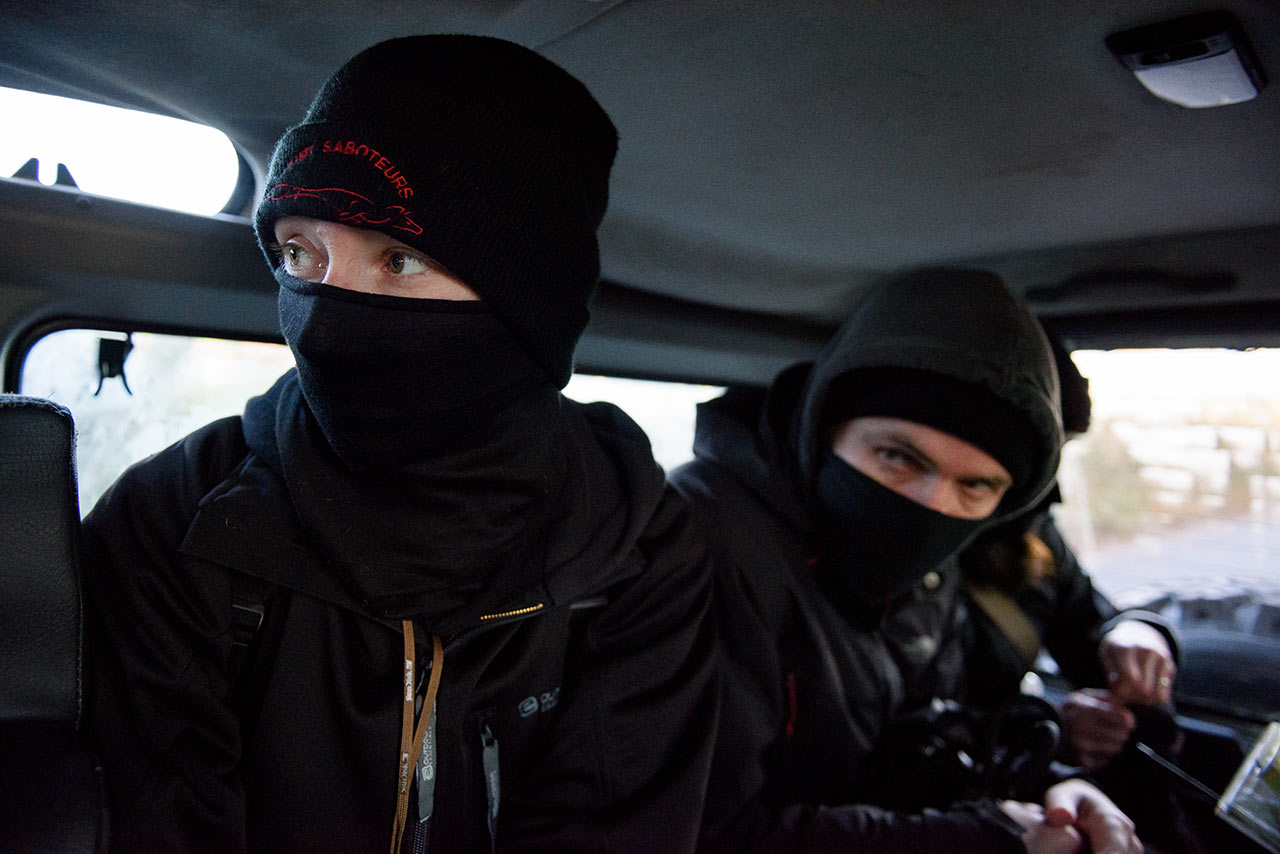

In August 1958 several members of the League Against Cruel Sports put some fake trails in the area where a hunting drive was going to take place. They wanted to confuse the bloodhounds used by the group of staghunters from Devon and Somerset and therefore prevent the hunting. The Daily Telegraph reported about this action: «opponents of staghunting who have so far failed to stop the sport, are resorting to ‘sabotage’». It was the first hunt sabotage to be claimed in history. And more followed.
During the next two hunting seasons this tactic was used and the members of the LACS, thanks to the propaganda obtained by this sort of actions, increased exponentially. The sabotages of militants acting on their own started to appear in the media. One of these people was Gwen Barter, the woman known back in those days for bringing a vehicle used by hunters to a halt. Months later she prevented also a fox hunting drive by blocking the exit of a lair with her own body.
These actions, the renown they achieved, and the low activity of the LACS, inspired John Prestige, a young journalist from Brixham, to found the Hunt Saboteurs Association in 1963. «We’re here to prevent people from hunting. The movement [the HSA] is financed by a small legacy of mine and the membership fees», he told the press. In the first days a hundred people enrolled and more than a thousand letters were received. The new tactics and the foundation of the HSA changed the history of the animal liberation movement forever and with them a new era marked by direct action started.
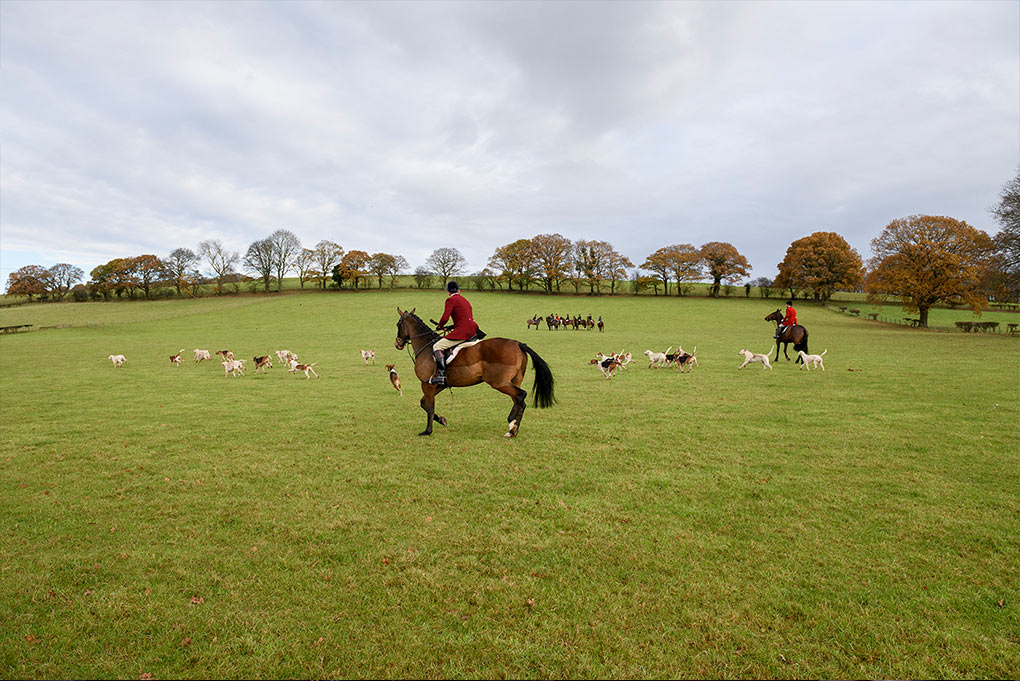
Traditional hunting with hounds is illegal since 2004 but it’s still carried out with total impunity.
The HSA was followed by more organizations that also operated under the sabotage and civil disobedience principles but took this practices further. In 1972 Ronnie Lee, who had founded a group of hunt saboteurs in Luton a bit before, and Cliff Goodman considered that the legal frame in which the HSA acted was not enough and that was necessary to push further. Taking the name of the youth groups of the Royal Society for the Prevention of Cruelty to Animals which rendered unusable the hunters’ shotguns already in the S. XIX, they created the Band of Mercy. To Lee and his partners this was an example of a true direct action. Two years later they were arrested for attacking a laboratory and sentenced to twelve months in prison. When Goodman was set free, he became the first police informer of the movement, but Lee was tougher than before. Aware of the rising public support to the animal liberations made in the hiding, he formed a group of thirty people to organize a new campaign that truly intimidated those who made money out of animal exploitation. The name had to transmit the idea of a revolutionary movement and Band of Mercy didn’t seem appropriate to him. That’s how the Animal Liberation Front was born.
The operational model of the ALF, based in an international network of similar groups decentralized but united by a common tactical and political ideology, has eased its expansion and nowadays it exists in more than twenty countries. According to the FBI and only in six years (1996-2002) the North American Animal Liberation Front caused more than 43 millions of dollars of damage to the animal exploitation industry through sabotages.
In that same political and social context the Animal Liberation Leagues deserve special attention. These groups, which emerged also in England, were triggered by the same reasons of urgency and need of direct action and operated also in a civil disobedience frame but, unlike the ALF, they acted in broad daylight and in a massive way. The actions they carried were named raids, and could gather tens of persons who went in groups to animal testing laboratories in order to collect evidences and documentation to expose later to the crowd. In June 1980 two hundred activists invaded the Babraham Agricultural Research Centre in Cambridge. The material obtained in that action is considered one of the biggest exhibitions of evidences against the animal testing industry and achieved a great impact in the media of the country.
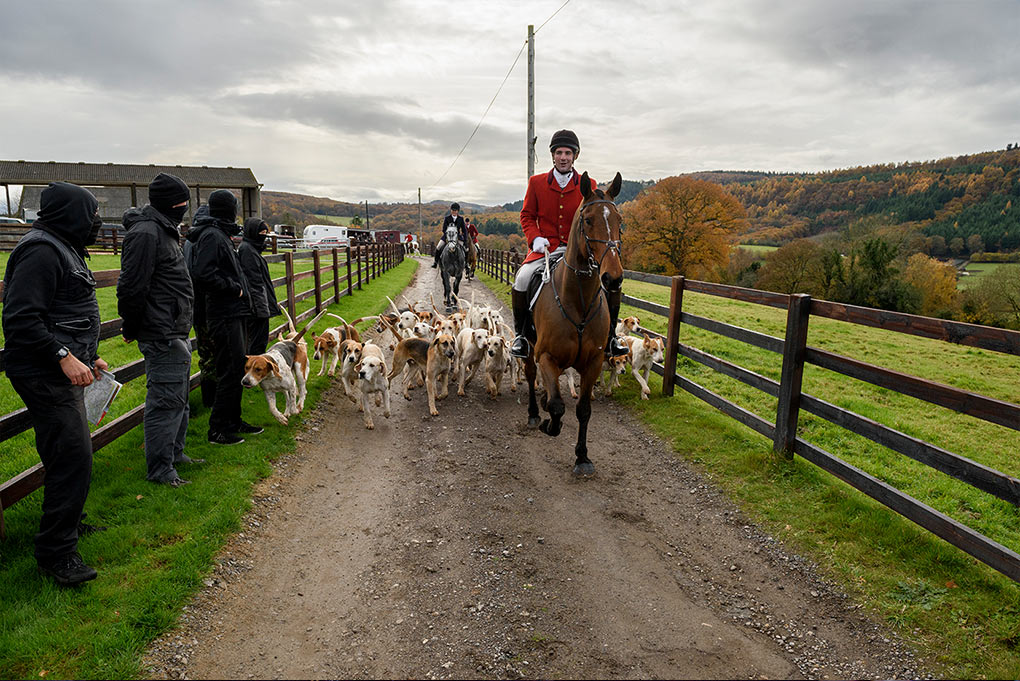
The saboteurs arrive to the hunter’s meeting point. The sabotage starts by making their presence clear.
All these organizations amplified a conflict in order not only to prevent certain companies from abusing animals, to liberate these of their oppression or to show the crowd what happened in their exploitation and testing centers, but also to put on the political and social agenda the debate about the legitimacy of animal exploitation.
Moreover they were an inspiration and encouraged thousands of people to engage in the fight for animal liberation. Without the communication technologies we have today (like the internet or mobile devices), they could create an alternative network of distribution and training (announcements, direct action manuals, internal debates, analysis,…) that allowed for the expansion of this membership model across the western geography.
But repression appeared very soon. Many of the English militants were retaliated in different ways and tens of them paid with their liberty. Some of them even with their lives. Mike Hill in 1991 and Tom Worby in 1993 died run over by hunters as they were going to block the vehicles pacifically. The drivers decided not to brake. On February 1st 1995 the same happened to Jill Phipps. She was run over by a lorry driver who transported live calves during a campaign which, by means of pacific blocking, wanted to prevent the access of the lorries to Coventry airport. On November 5th 2001 Barry Horne passed away in his fourth hunger strike under the custody of British government while serving a sentence of eighteen years in prison.
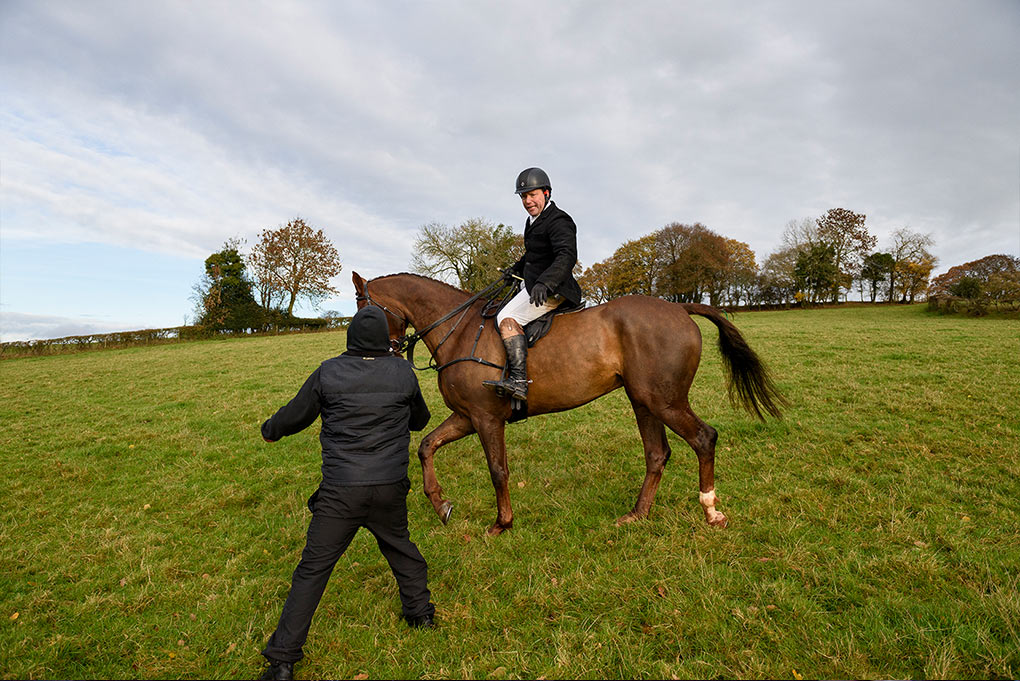
A saboteur prevents hunter from passing slowing therefore the whole group’s activity.
It isn’t been so long since then, but the current drift of the animal liberation movement multiplies the sense of distance. The Nonprofit-way organizational model, more and more established in the animal rights movement, has been gradually replacing and gaining ground to this space built by means of fighting. It isn’t necessary to agree with their tactics to recognize the importance that a combative environment as the mentioned one had in this movement’s construction. In November 2016, I travelled to England, encouraged by the interest in understanding the origin and evolution of the movement and trying to vindicate its memory. There I went with the Bristol Hunt Sabs to one of their sabotages. I witnessed their actions and recorded them. I could also talk with them about their tactics, their aims and other subjects related with animal liberation which are reflected in the following interview.
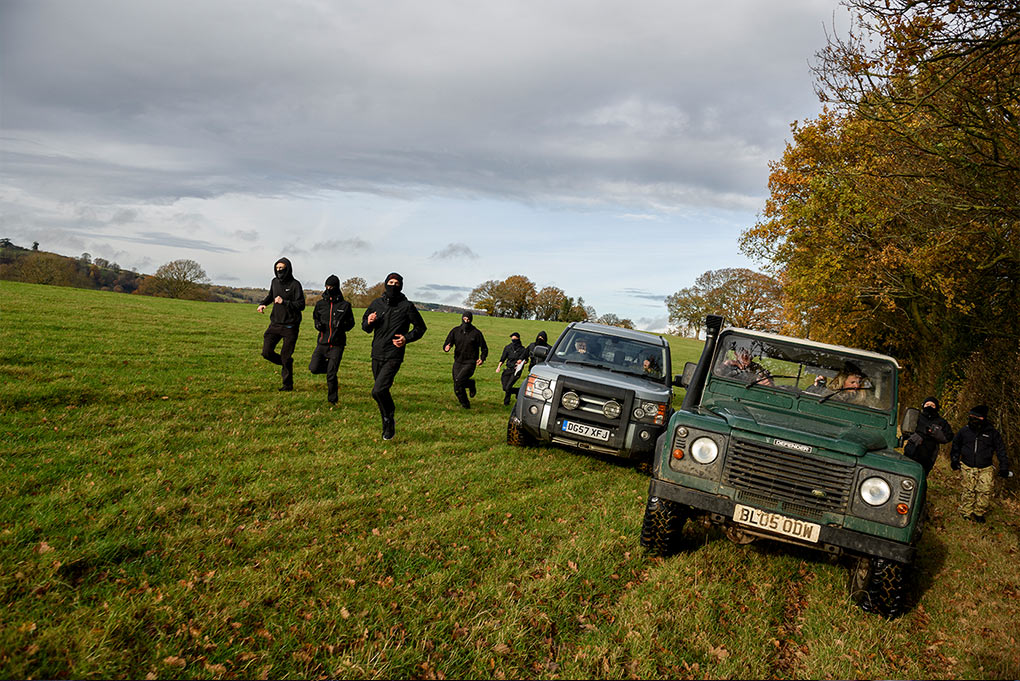
The supporters are people who attend hunting drives to prevent the saboteurs group to achieve their goal. In the image two 4x4 follow several saboteurs.
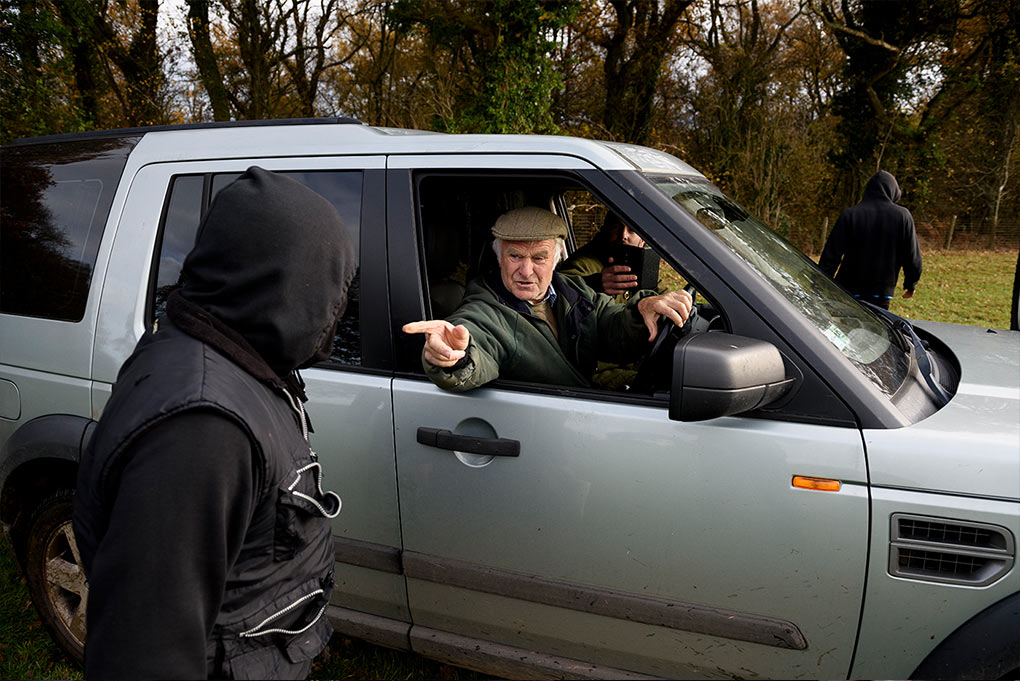
The hunt saboteurs are usually threatened by the supporters.
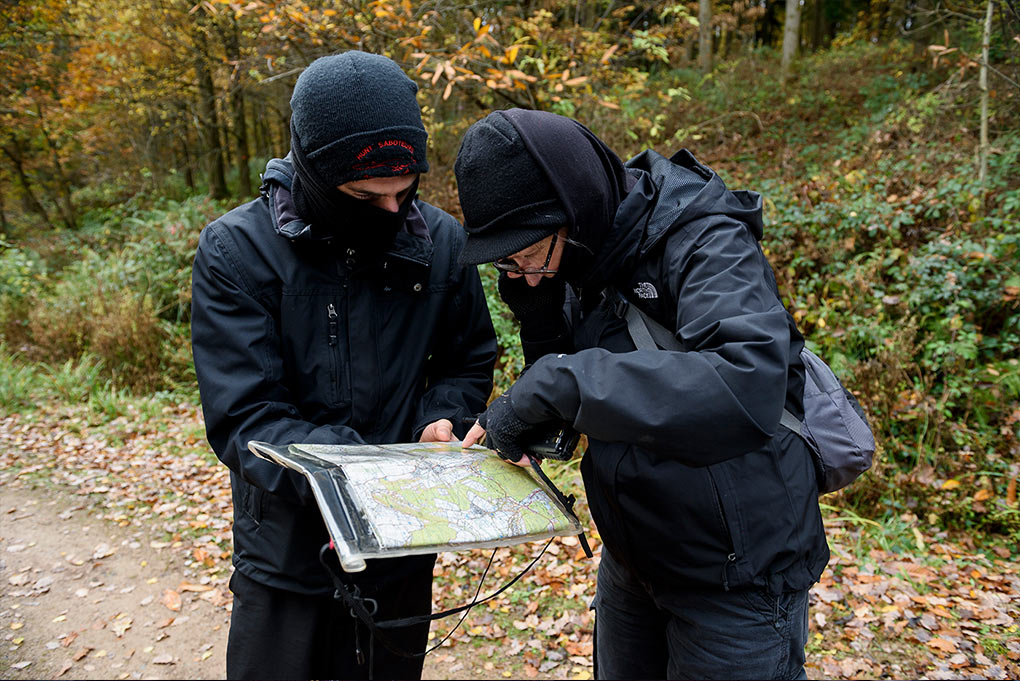
It’s important to know the area where the sabotage is going to take place. The Bristol group studies the land days before and the map plays a key role.
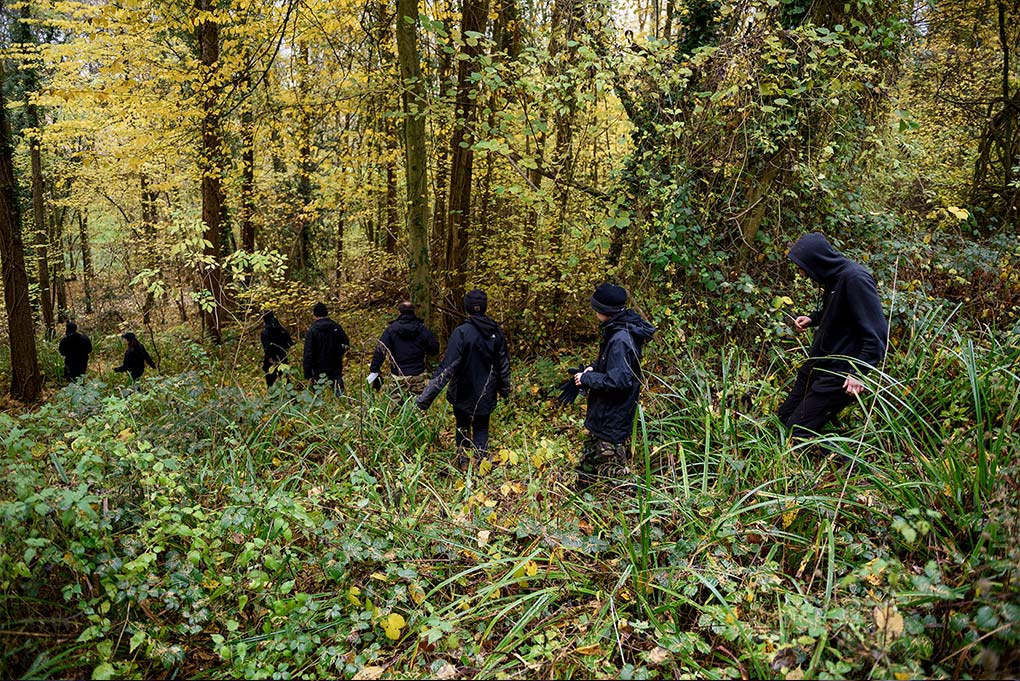
Hunters try to make it difficult by riding a horse away and once they’ve studied the area, they take shortcuts.
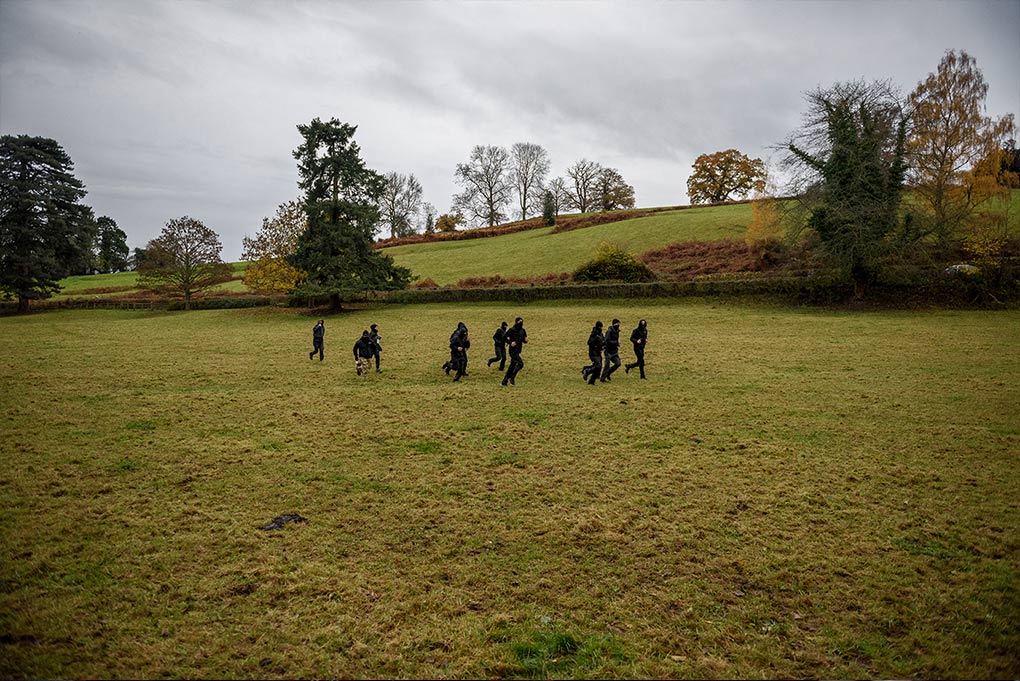
Sabotage days are long and tiring. Sabotage success depends greatly on being in the right time and place. When they are called by those watching in the 4x4, it is time to run.
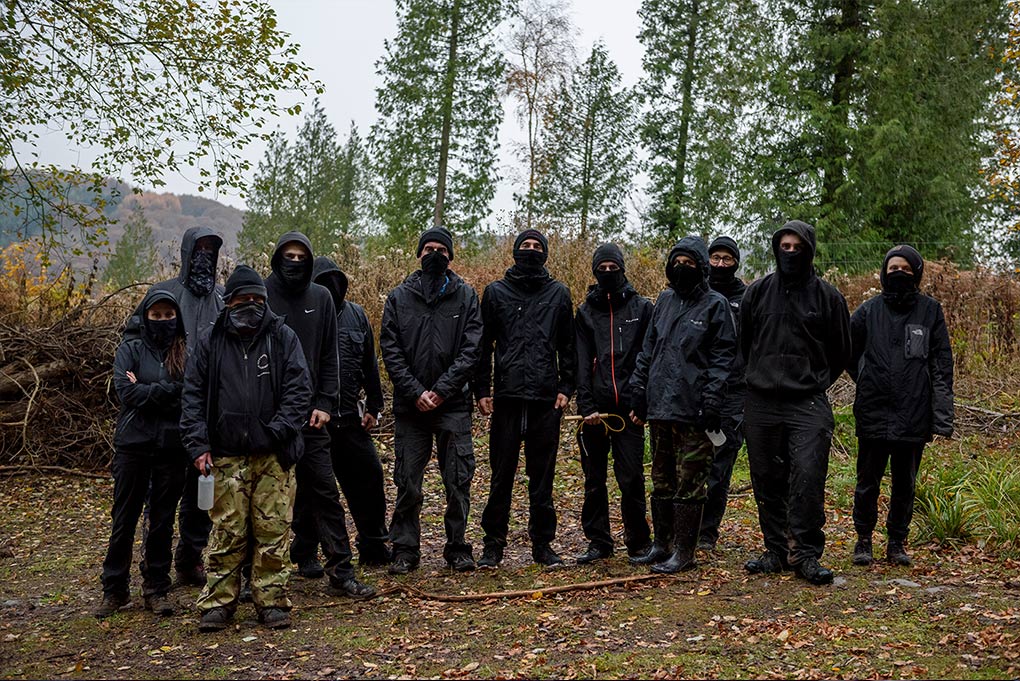
Hunters have threatened, physically attacked and chased saboteurs in their private life. That’s why many of them cover their face with a balaclava.
NOTES:
- Tochelar, Michael. The History of Opposition to Blood Sports in Twentieth Century England. Routledge, 2016.
- Best, Steven & Nocella, Anthony J. The Animal Liberation, Front a political and philosophical analysis. Lantern books, 2011.
- VVAA. Ed: Best, Steven & Nocella, Anthony J. Terrorists or Freedom Fighters? Reflections on the liberation of animals. Lantern books, 2004.
- Against all odds. 1980. Undergorund publication distributed in those years as a zine.
- Kriesi, Hanspeter & Rucht, Dieter. Social Movements in a Globalising World. Pallgrave macmillan, 1999.
- Northwest Hunt Saboteurs. A tribute to Mike Hill.
- F. Jarboe, James. The Threat of Eco-Terrorism. Federal Bureau of investigation (FBI). 2002 (12 de Febrero).